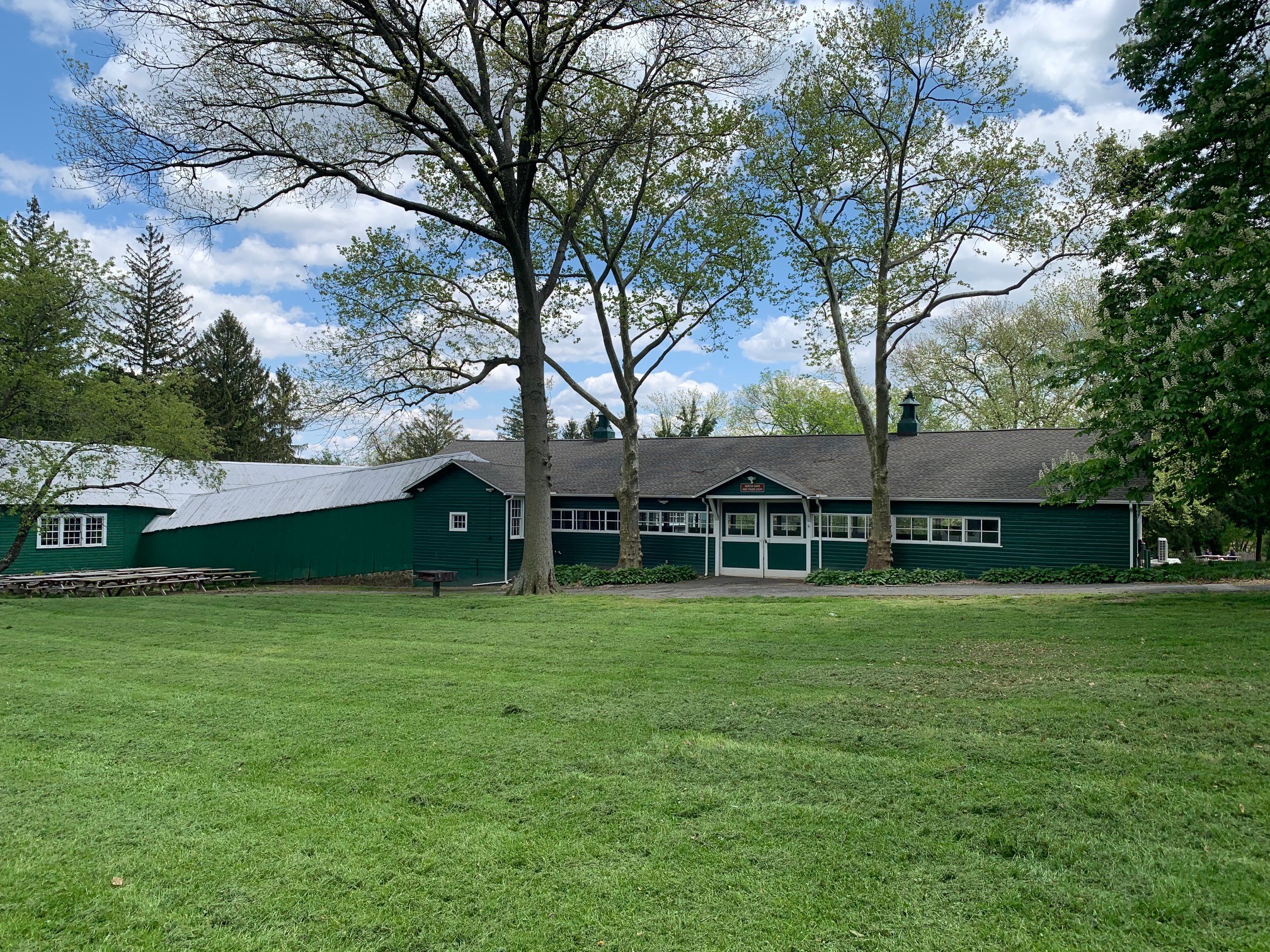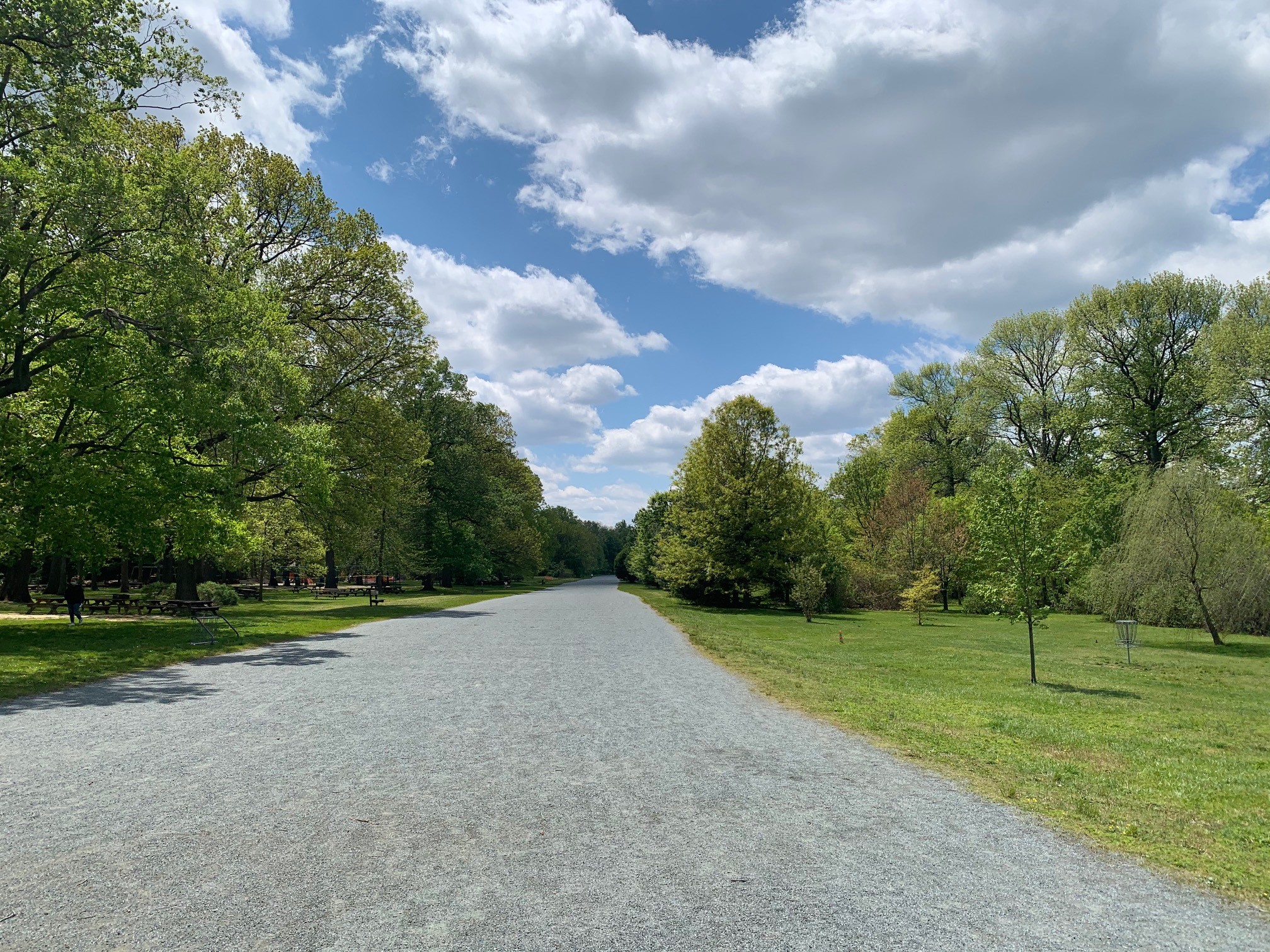
May 13, 2020
By: Nick Madden, Interpretive Programs Manager at Bellevue State Park
Have you seen the horses in the paddocks at Bellevue State Park? Or maybe their tracks along the trails? Horses and the famous Dupont family have played a big role in shaping the park into what you see today. William Dupont Sr., the first of his family to live on the property, was a well-known judge of Hackney horses, a breed that is used in dressage, and, at one point in time, for pulling fancy carriages. Percheron horses were also a favorite of his, but more on them later. His son, William Dupont Jr., the last resident of the property, favored steeple chase thoroughbreds, acted as the director of the Delaware Steeplechase and Race Association, and was Master of Foxcatcher Farms. Junior’s fondness for horses went further. For instance, the hedges in front of Bellevue Hall were designed to mimic well-known horse equipment, and he even had a telephone (linked to each of the stables) installed in his bathroom, next to his shower. How do these two men and their passion for horses relate to what we can see in the park today? Let’s start with Senior.

Action photograph of William du Pont, Jr. riding horseback at a steeplechase horse race. Hagley ID, Box/folder number, William du Pont, Jr. papers (Accession 2317.II), Manuscripts and Archives Department, Hagley Museum and Library, Wilmington, DE 19807
A Barn from a Sears Catalog
Although no longer found on the property, Percheron horses were important in keeping Bellevue self-sustaining. These large, Clydesdale-like horses had muscles that proved useful to Senior on his farm but also required special housing. In comes Sears (yes, that famous department store), specifically one of their catalogs from around the turn of the century, from which Senior purchased a barn for his Percherons. Today that barn still survives! In fact, many of you probably pass this amazing big green barn as you walk through the community gardens. If you haven’t, take a look, and think: “Wow, this came from a Sears catalog.”

Present-day Percheron Barn
Hunter Barn and Figure 8 Barn
Percheron barn wasn’t the only building at Bellevue built to house horses-the Hunter and Figure 8 barns did, too! The Hunter Barn was constructed to house, you guessed it, hunting horses! The attached, much larger Figure 8 barn is an indoor ⅛ of a mile-long track used for training during bad weather, while the Hunter Barn itself was where the horse stalls were located as well as some stable staff housing. Both of these buildings are also green but are found on the other side of the park, near the tennis courts. Nowadays, these spaces are used for events, but should you be in attendance, see if you can spot where the stalls once were, as well as the manager’s office.

Present-day Hunter Barn and Figure 8 Barn
The Horses
Let’s move on to the actual horses, now, shall we? The horses who live at Bellevue State Park today are managed by the wonderful people of Wellsprings Farm. On their property is a hidden gem that we call the Miami Track, which, sorry to disappoint, does not have palm trees and beautiful beach access. However, when Junior built it for his thoroughbreds, it was one of only two indoor tracks in the entire nation for thoroughbreds! With this track in place, Junior could continue his training no matter the weather condition, the same idea as with the Figure 8 barn. Over the years, the Miami Track faced a number of hardships, namely, the trees falling on it. The Miami Track is now less of an oval and more resembles two horseshoes facing each other. Wellspring Farm still uses it today, however, and takes great care of this prized possession.

Present-day inside middle of Miami Track
The Track
Our final spot is probably the most visible and even the most visited section of the park: that giant track in the middle. Can you see where this is going? That is right, the track was indeed designed for horses, specifically thoroughbreds, and measures 9 Furlongs, or 1 and ⅛ miles. This is the proper size for the breed, unlike the Miami which is much smaller. Junior excelled in creating this masterpiece, and his expertise was widely talked about. Many people consulted with him to help design their own tracks. Some of these people are very famous still today: Pimlico Race Course and Belmont Park, both of which are the locations of the famous triple crown, Preakness Stakes and Belmont Stakes, respectively. Horses no longer use the now gravel track at Bellevue State Park, but remnants are still visible, aside from the track itself, like the stone corner wall that marked where races would start.

Main Track in comparison to the Miami Track (the mini-me), Percheron Barn is at the bottom left where the two curved roads meet, the mansion at the top.
Here at the park, we are very grateful that Wellsprings Farm maintains this legacy so well, by keeping horses part of this wonderful community; Bellevue would not be the same without them.

Present-day Main Track


